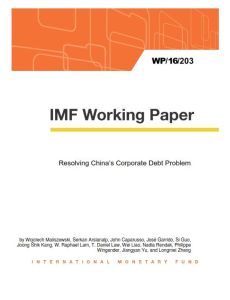Join getAbstract to access the summary!

Join getAbstract to access the summary!
Wojciech Maliszewski, Serkan Arslanalp, John Caparusso, José Garrido, Si Guo, Joong Shik Kang, W. Raphael Lam, T. Daniel Law, Wei Liao, Nadia Rendak, Philippe Wingender, Jiangyan Yu and Longmei Zhang
Resolving China’s Corporate Debt Problem
IMF, 2016
What's inside?
Excessive corporate credit in China has led to widespread investment underperformance.
Recommendation
Intended to fuel domestic investment in the aftermath of the 2008 financial crisis, China’s corporate credit boom has instead led firms to lackluster performance and poor-quality investments. According to this incisive report from IMF experts, China’s policy makers and bankers must execute a disciplined growth strategy that, in the longer term, will benefit the Chinese economy. That includes creating frameworks for deciding which troubled companies to rescue and which to abandon, along with overhauling capital markets to promote more efficient investment. getAbstract recommends this rigorous analysis to economists, policy makers, financial executives and China watchers.
Summary
About the Authors
Wojciech Maliszewski et al. are economists and analysts at the International Monetary Fund.





















Comment on this summary